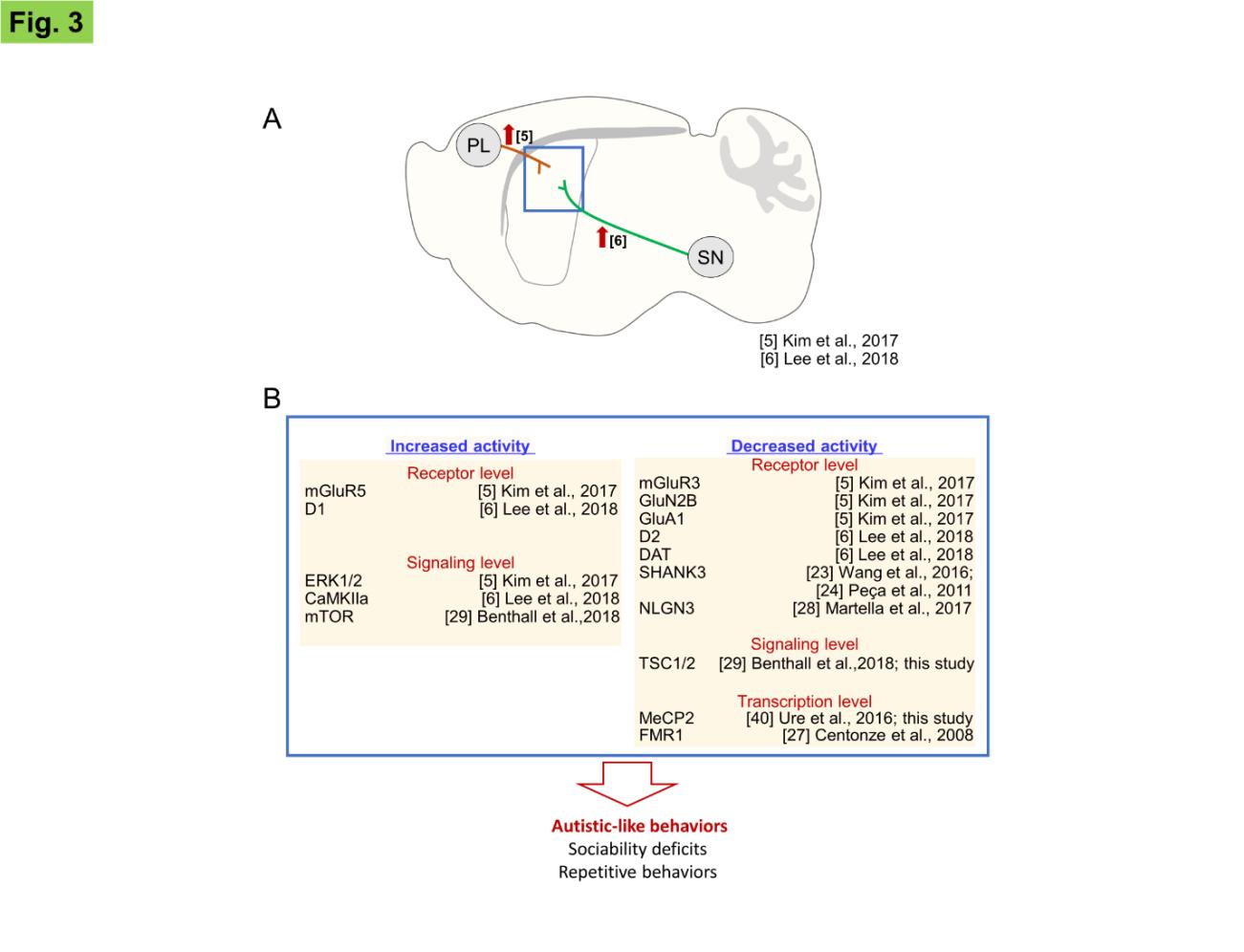Articles
Article Tools
Stats or Metrics
Article
Short Communication
Exp Neurobiol 2018; 27(6): 539-549
Published online December 28, 2018
https://doi.org/10.5607/en.2018.27.6.539
© The Korean Society for Brain and Neural Sciences
Striatal Inhibition of MeCP2 or TSC1 Produces Sociability Deficits and Repetitive Behaviors
Yunjin Lee1,†, Hannah Kim1,†, and Pyung-Lim Han1,2*
1Department of Brain and Cognitive Sciences, Ewha Womans University, Seoul 03760, Korea.
2Department of Chemistry and Nano Science, Ewha Womans University, Seoul 03760, Korea.
Correspondence to: *To whom correspondence should be addressed.
TEL: 82-2-3277-4130, FAX: 82-2-3277-3419
e-mail: plhan@ewha.ac.kr
†These authors contributed equally to this work.
Abstract
Autism spectrum disorder (ASD) is a heterogeneous group of neurobehavioral disorders characterized by the two core domains of behavioral deficits, including sociability deficits and stereotyped repetitive behaviors. It is not clear whether the core symptoms of ASD are produced by dysfunction of the overall neural network of the brain or that of a limited brain region. Recent studies reported that excessive glutamatergic or dopaminergic inputs in the dorsal striatum induced sociability deficits and repetitive behaviors. These findings suggest that the dorsal striatum plays a crucial role in autistic-like behaviors. The present study addresses whether functional deficits of well-known ASD-related genes in the dorsal striatum also produce ASD core symptoms. This study also examines whether these behavioral changes can be modulated by rebalancing glutamate and/or dopamine receptor activity in the dorsal striatum. First, we found that the siRNA-mediated inhibition of
Graphical Abstract

Keywords: Autism spectrum disorder, dorsal striatum, MeCP2, TSC1


